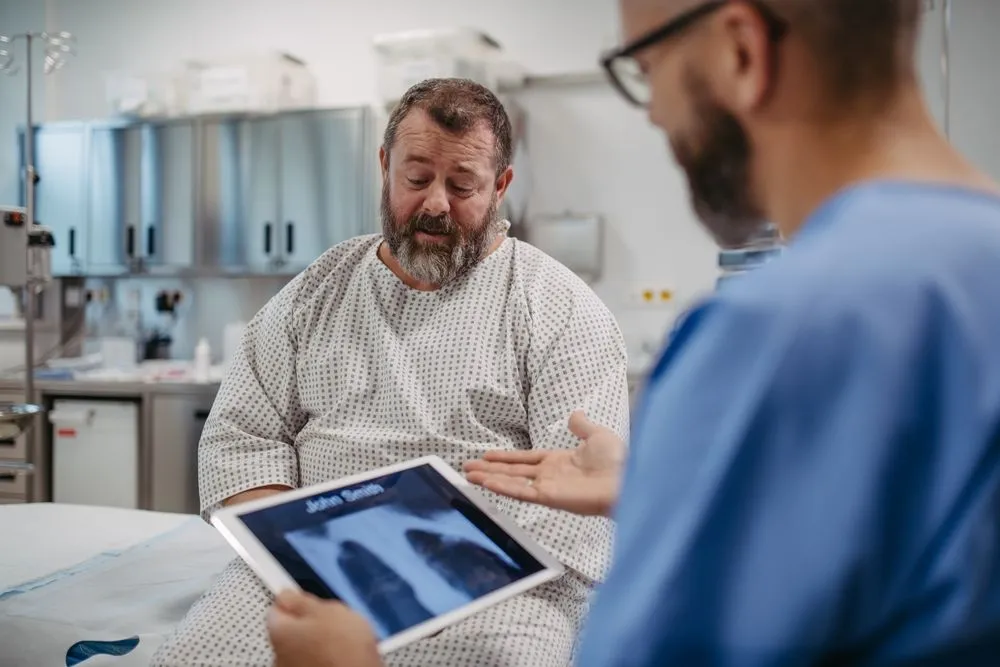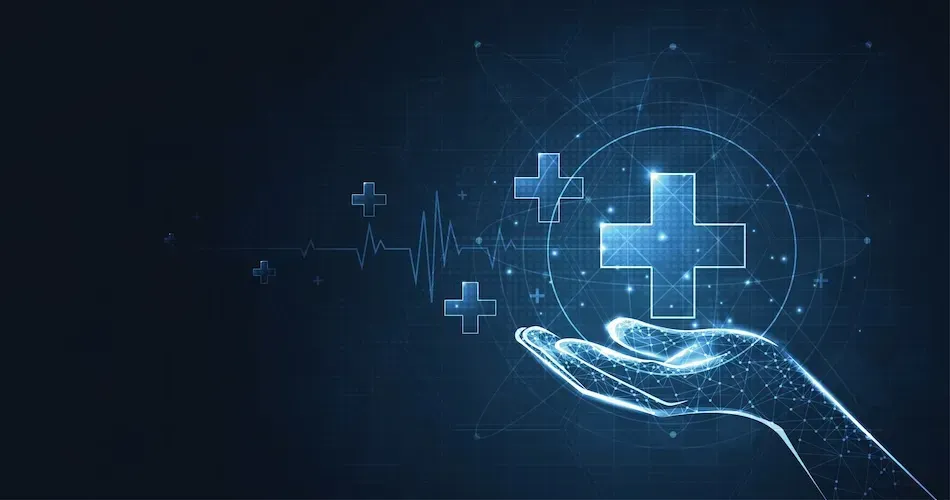DLBCL in Adolescents and Young Adults (AYA)

Diffuse large B-cell lymphoma (DLBCL) is the most common type of aggressive non-Hodgkin lymphoma (NHL) in adults. While less frequent, DLBCL can also affect adolescents and young adults (AYA), typically defined as those between 15 and 39 years old. This guide explores key information about DLBCL in AYA patients, including its incidence, treatment approaches, and unique challenges.
How Common is DLBCL in Young Adults? And Are There Racial Disparities?
DLBCL is less common in AYA compared to adults, accounting for approximately 5-10% of all non-Hodgkin lymphoma cases in this age group. However, it's still the most frequent aggressive lymphoma diagnosed in AYA patients.
Racial disparities exist in DLBCL incidence among AYA. A recent study indicates that Black adolescents and young adults have a higher incidence of DLBCL compared to their White counterparts. Understanding these disparities is crucial for improving early diagnosis and treatment access for all AYA patients.
Treatment for DLBCL in AYA: Is it Different from Adults?
While the core principles of DLBCL treatment are similar for adults and AYA, there are some key differences. AYA patients are more likely to receive dose-intensive chemotherapy regimens like R-CHOP (rituximab, cyclophosphamide, doxorubicin, vincristine, and prednisone). These intensive approaches aim for high cure rates but can also lead to a higher risk of side effects.
Challenges of Treating DLBCL in Young Adults
Several unique challenges are associated with treating DLBCL in AYA:
- Fertility Concerns: AYA patients are more likely to be at a stage in life where they desire to have children. Certain chemotherapy drugs can affect fertility, making fertility preservation discussions crucial before treatment begins.
- Long-Term Effects: The intensive chemotherapy regimens used for DLBCL can have long-term side effects, including heart problems, secondary cancers, and cognitive impairment. These potential complications require careful monitoring and management in AYA patients who have a longer lifespan compared to adults diagnosed with DLBCL.
- Psychosocial Impact: A cancer diagnosis at a young age can have a significant emotional and social impact on AYA patients. They may face challenges with relationships, education, and career aspirations. Access to psychosocial support services is essential for AYA patients and their families.
Do Young Adults with DLBCL Have Different Outcomes?
Despite the challenges, AYA patients with DLBCL often have better overall survival rates compared to adults diagnosed with the disease. This may be due to factors like their generally good health status and response to treatment. Still, some AYA patients may require stem cell transplantation as part of their treatment plan. While transplant outcomes are generally favorable in AYA, there is still a risk of serious complications associated with the procedure. Examples of these complications include:
- Graft-versus-host disease (GVHD): This is a serious condition that can occur after a stem cell transplant when the donated stem cells attack the recipient's body.
- Infections: Patients undergoing transplants are more susceptible to infections due to the suppression of their immune system.
- Organ damage: The conditioning chemotherapy used before a transplant can damage organs like the lungs, heart, and kidneys.
Other Considerations for DLBCL in AYA Patients
Here are some additional factors to consider for DLBCL in AYA patients:
- Clinical trials: Participation in clinical trials can provide access to cutting-edge treatment approaches specifically designed for AYA patients with DLBCL.
- Support groups: Connecting with other AYA patients and their families can offer emotional support and valuable insights as you navigate the treatment journey.
- Financial concerns: The cost of cancer treatment can be overwhelming. Exploring financial assistance programs and resources can help manage treatment-related expenses.
HealthTree for DLBCL can help you navigate these options, connect you with other patients, and provide helpful resources to help you understand your disease and your treatment options. Join our DLBCL community today!
Sources:
Diffuse large B-cell lymphoma (DLBCL) is the most common type of aggressive non-Hodgkin lymphoma (NHL) in adults. While less frequent, DLBCL can also affect adolescents and young adults (AYA), typically defined as those between 15 and 39 years old. This guide explores key information about DLBCL in AYA patients, including its incidence, treatment approaches, and unique challenges.
How Common is DLBCL in Young Adults? And Are There Racial Disparities?
DLBCL is less common in AYA compared to adults, accounting for approximately 5-10% of all non-Hodgkin lymphoma cases in this age group. However, it's still the most frequent aggressive lymphoma diagnosed in AYA patients.
Racial disparities exist in DLBCL incidence among AYA. A recent study indicates that Black adolescents and young adults have a higher incidence of DLBCL compared to their White counterparts. Understanding these disparities is crucial for improving early diagnosis and treatment access for all AYA patients.
Treatment for DLBCL in AYA: Is it Different from Adults?
While the core principles of DLBCL treatment are similar for adults and AYA, there are some key differences. AYA patients are more likely to receive dose-intensive chemotherapy regimens like R-CHOP (rituximab, cyclophosphamide, doxorubicin, vincristine, and prednisone). These intensive approaches aim for high cure rates but can also lead to a higher risk of side effects.
Challenges of Treating DLBCL in Young Adults
Several unique challenges are associated with treating DLBCL in AYA:
- Fertility Concerns: AYA patients are more likely to be at a stage in life where they desire to have children. Certain chemotherapy drugs can affect fertility, making fertility preservation discussions crucial before treatment begins.
- Long-Term Effects: The intensive chemotherapy regimens used for DLBCL can have long-term side effects, including heart problems, secondary cancers, and cognitive impairment. These potential complications require careful monitoring and management in AYA patients who have a longer lifespan compared to adults diagnosed with DLBCL.
- Psychosocial Impact: A cancer diagnosis at a young age can have a significant emotional and social impact on AYA patients. They may face challenges with relationships, education, and career aspirations. Access to psychosocial support services is essential for AYA patients and their families.
Do Young Adults with DLBCL Have Different Outcomes?
Despite the challenges, AYA patients with DLBCL often have better overall survival rates compared to adults diagnosed with the disease. This may be due to factors like their generally good health status and response to treatment. Still, some AYA patients may require stem cell transplantation as part of their treatment plan. While transplant outcomes are generally favorable in AYA, there is still a risk of serious complications associated with the procedure. Examples of these complications include:
- Graft-versus-host disease (GVHD): This is a serious condition that can occur after a stem cell transplant when the donated stem cells attack the recipient's body.
- Infections: Patients undergoing transplants are more susceptible to infections due to the suppression of their immune system.
- Organ damage: The conditioning chemotherapy used before a transplant can damage organs like the lungs, heart, and kidneys.
Other Considerations for DLBCL in AYA Patients
Here are some additional factors to consider for DLBCL in AYA patients:
- Clinical trials: Participation in clinical trials can provide access to cutting-edge treatment approaches specifically designed for AYA patients with DLBCL.
- Support groups: Connecting with other AYA patients and their families can offer emotional support and valuable insights as you navigate the treatment journey.
- Financial concerns: The cost of cancer treatment can be overwhelming. Exploring financial assistance programs and resources can help manage treatment-related expenses.
HealthTree for DLBCL can help you navigate these options, connect you with other patients, and provide helpful resources to help you understand your disease and your treatment options. Join our DLBCL community today!
Sources:

about the author
Lisa Foster
Lisa Foster is a mom of 3 daughters and 1 perfect grandchild, a puzzle lover, writer and HealthTree advocate. She believes in the mission of the foundation and the team that builds it forward. She calls Houston, Texas home.
More on Core Education
Trending Articles
Get the Latest Large B Cell Lymphoma Updates, Delivered to You.
By subscribing to the HealthTree newsletter, you'll receive the latest research, treatment updates, and expert insights to help you navigate your health.
Together we care.
Together we cure.
3x Faster.










